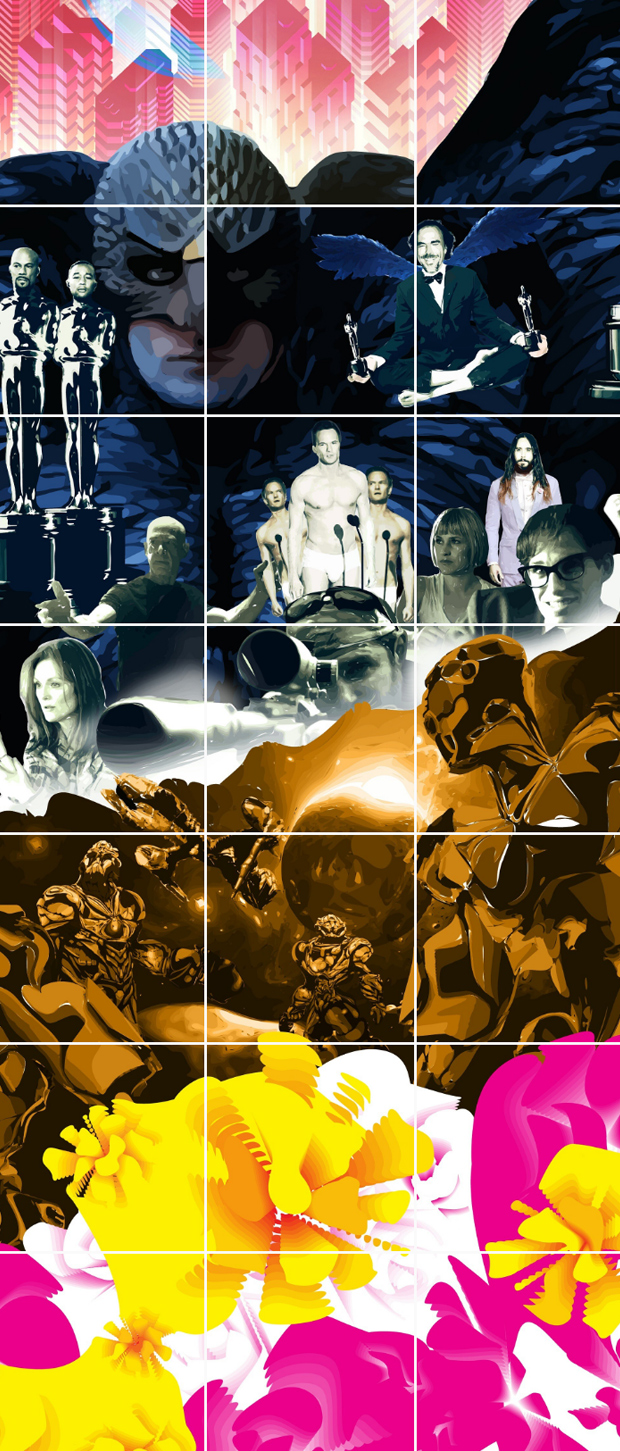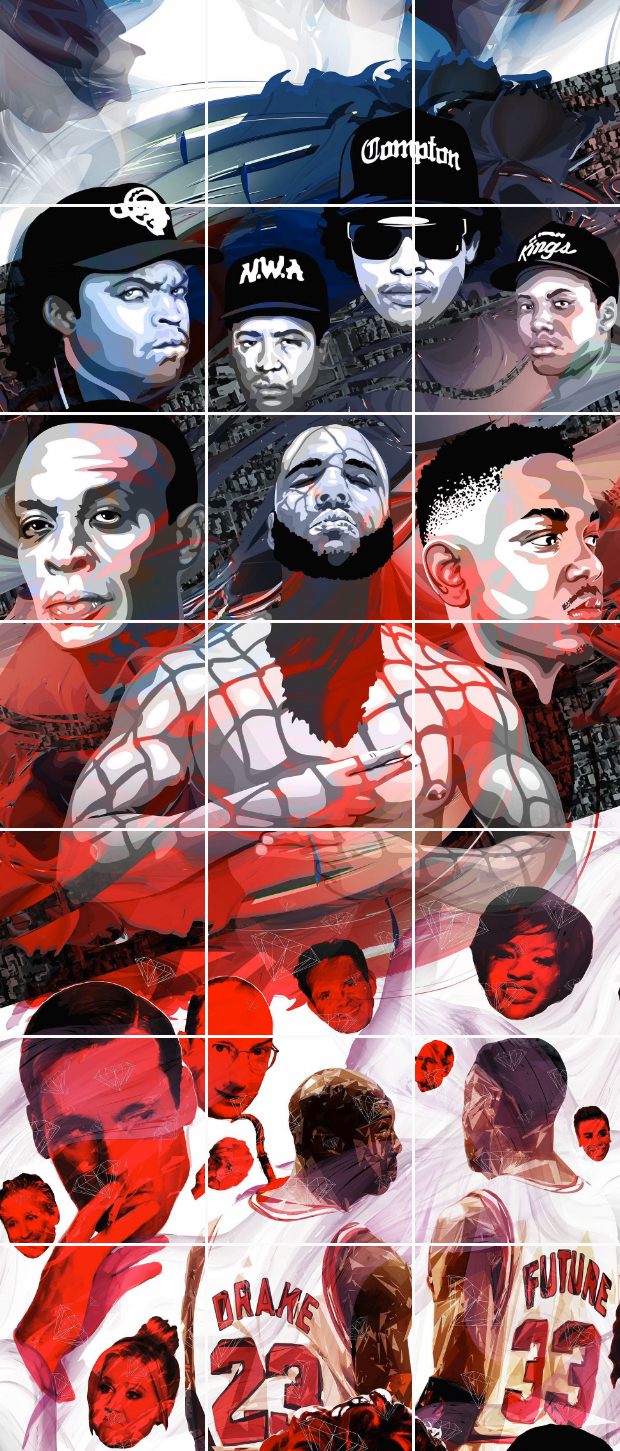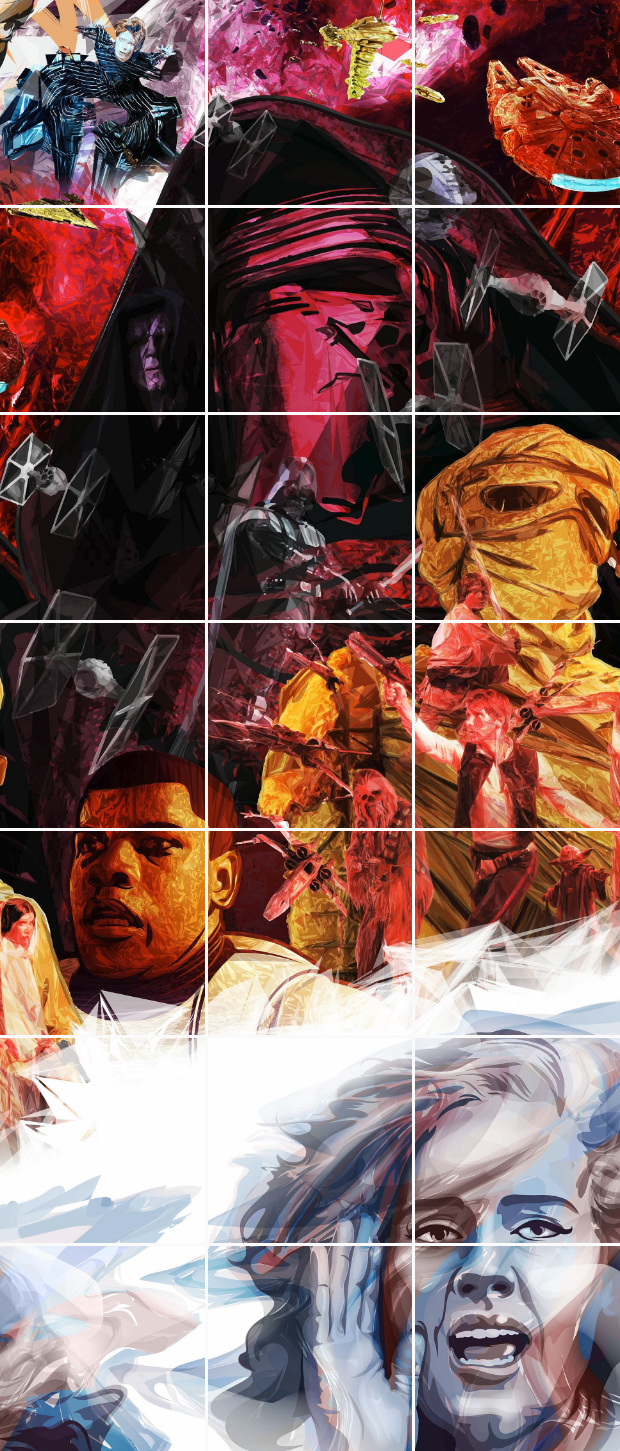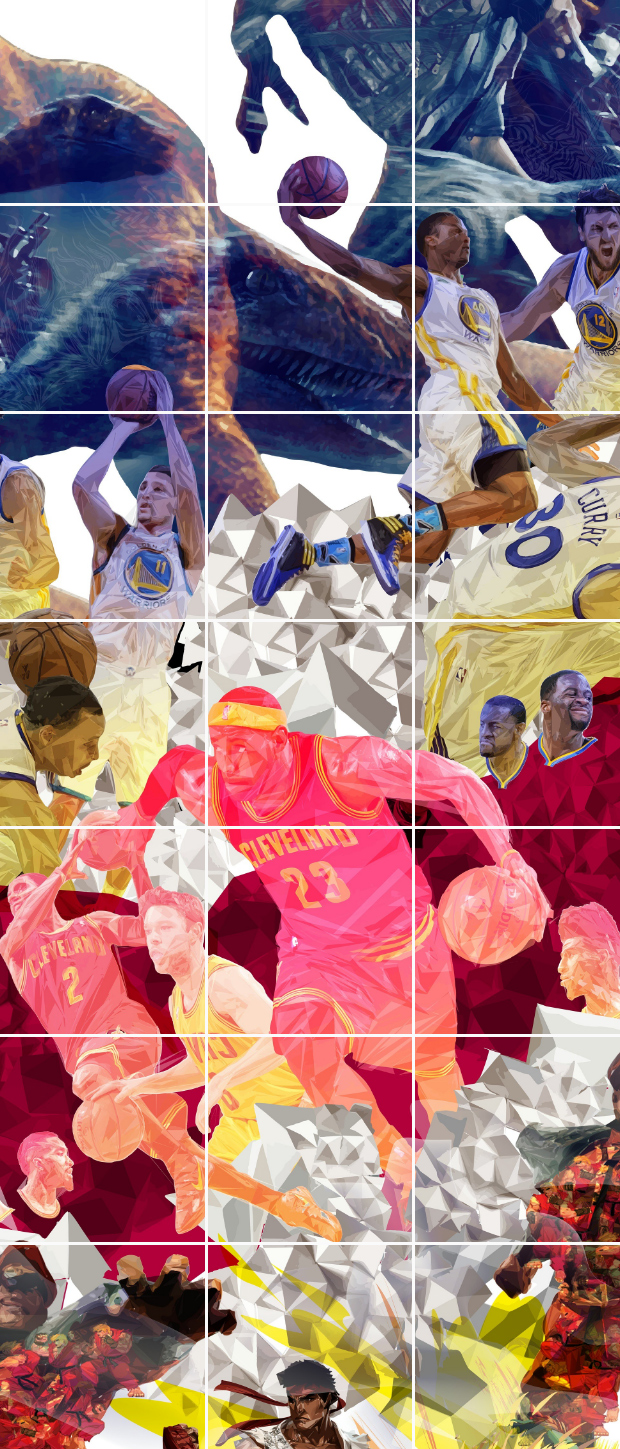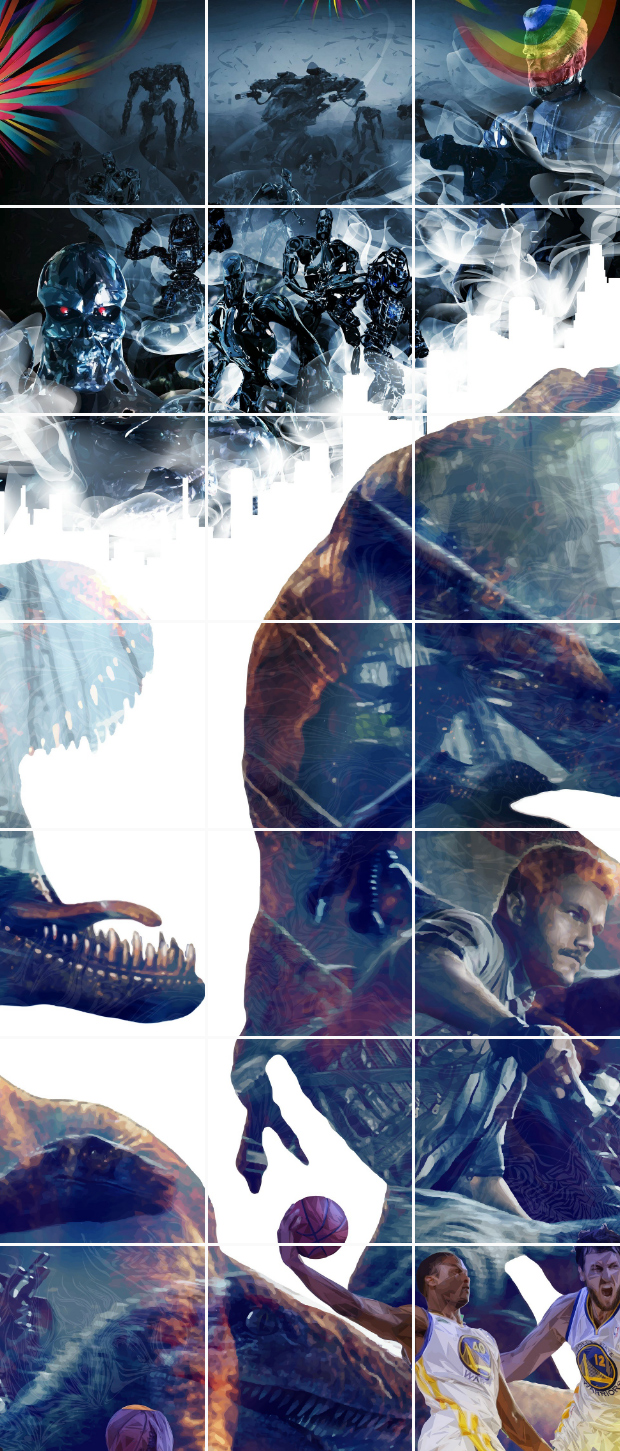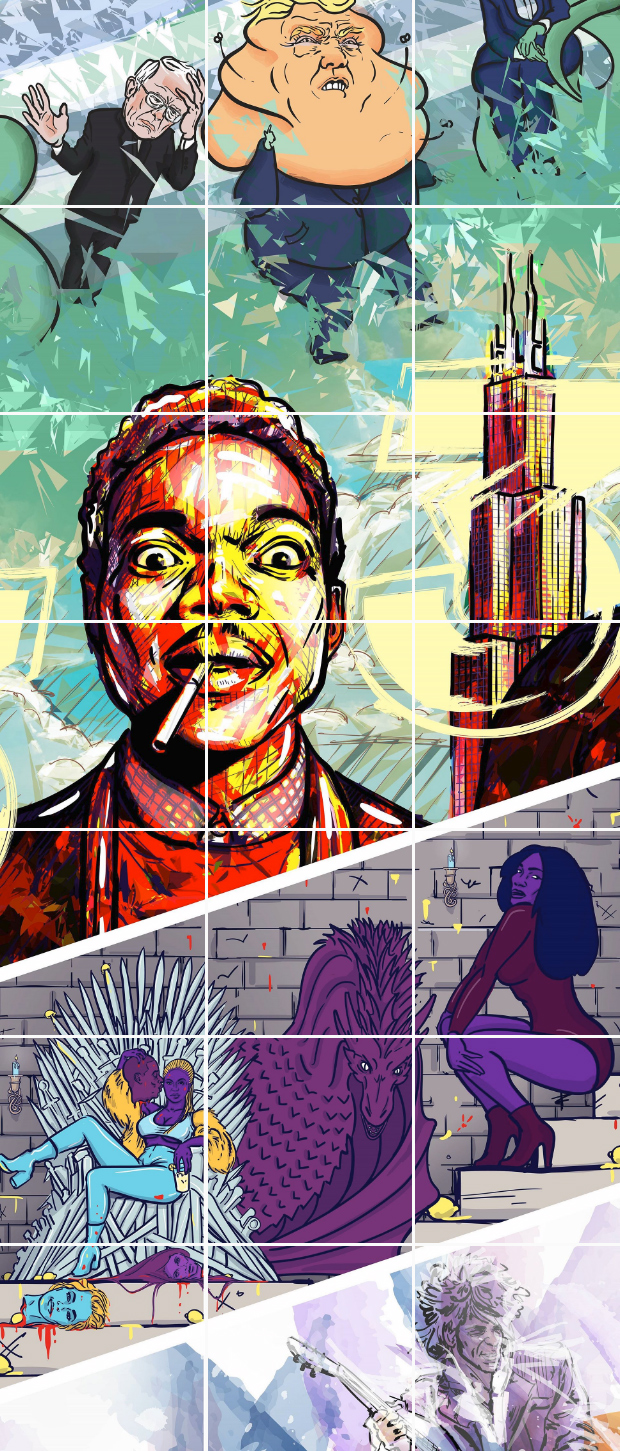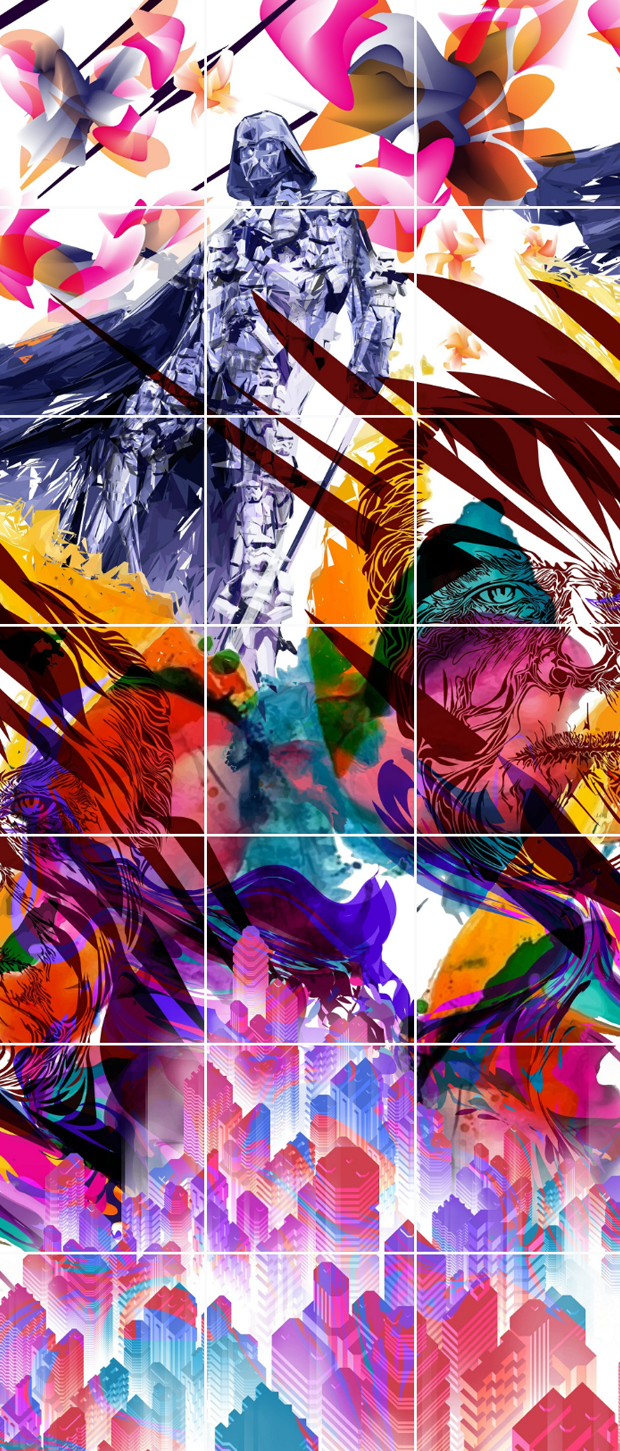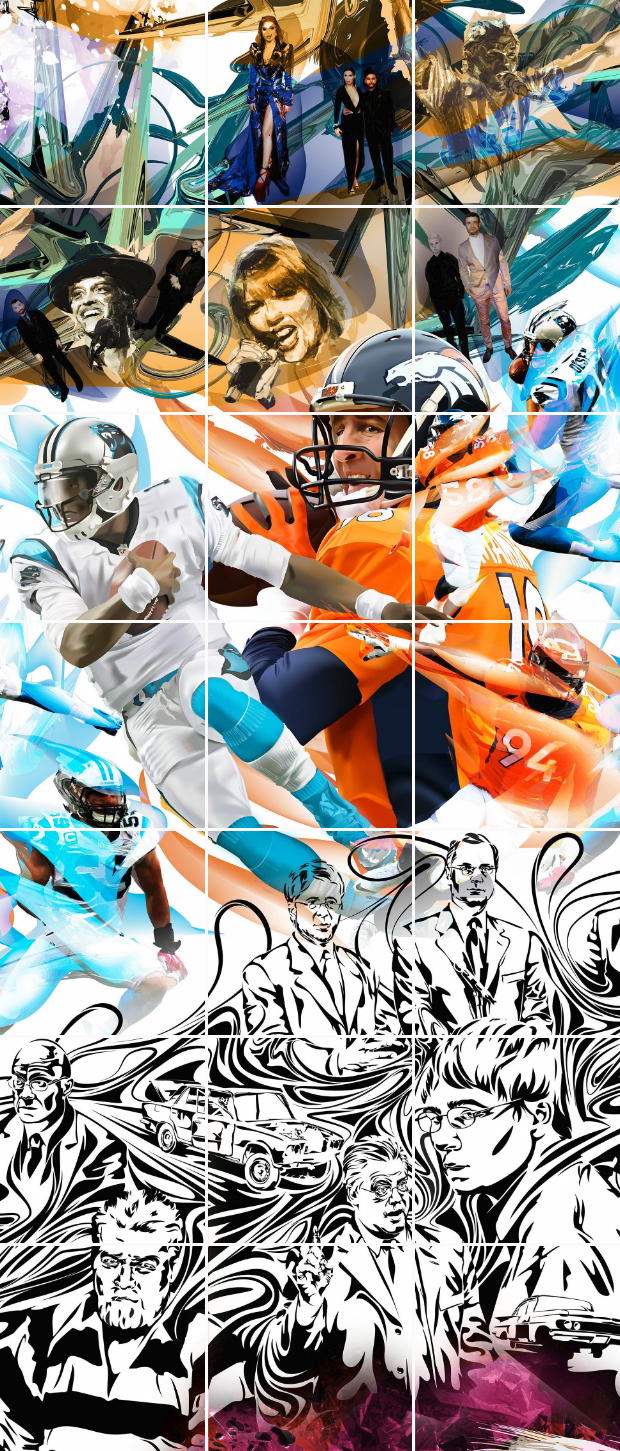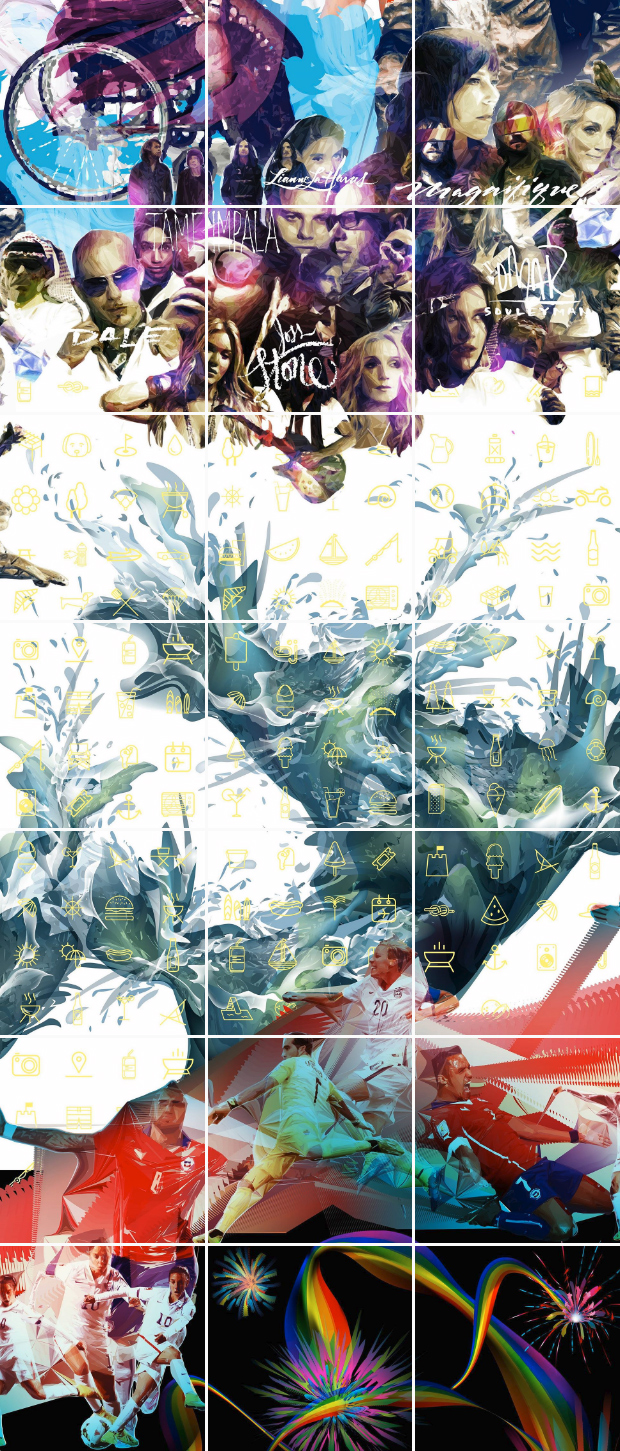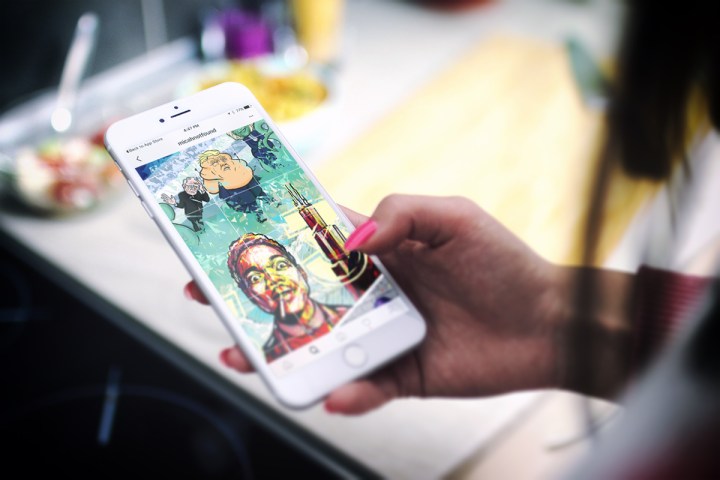
Digital Trends recently spoke with him to get a feel for what it means to make art in a social-first economy, and how the group makes a lasting impact by riffing on the inherently temporary themes of pop culture.
“We happen to be drawn to that subject matter,” Milner said over the phone. “With pop culture, it’s important to utilize the right medium. You have to work at a fast pace and release it in a way that can reach a lot of people in a short time.” For Art404, that means working directly through social media, or in such a way as to generate interest on social media (such as the group’s “Macbook Selfie Stick” performance piece).
“Once I figured out how to post one image at a time without the grid breaking, then I knew I was onto something.”
In one sense, Milner’s Instagram account is a more traditional type of art compared to the group’s other projects. It serves as a visual chronicle of current events, each individual image living as a “tile” within the full work, which comes together only when viewing the main profile page.
This in itself isn’t a new idea — many Instagram accounts follow a similar pattern — but Milner’s is different: the entire account is one single work of art, a living mural that continually changes. As tiles are added, the piece grows, the new seamlessly blending with the old, Kylo Ren transitioning effortlessly into Ziggy Stardust.
It’s a perfect example of using a digital medium, specifically a social one, in a way that would not be possible in the physical world. It offers the immediacy required for covering current events, but in a way that also gives it permanence and long-term significance. “It provides a history of moments, knitted together in a continual timeline,” Milner explained.
The project was a result of much experimentation. “I was just playing around,” said Milner. He knew he wanted to use Instagram for a singular work of art, but one that wasn’t static, that could change and grow over time. “Once I figured out how to post one image at a time without the grid breaking, then I knew I was onto something.”
The origins of art
Milner added 70 or so tiles when the account went live, and from there began uploading just a single image every day. With each new upload, the grid shifts — older images are pushed right, or drop down to a lower row. Making sure the grid continued to line up with new content was no easy task.
Milner designs 12 to 15 tiles simultaneously, using a combination of Adobe Photoshop and Illustrator. He pulls source material into Photoshop to create the composition and uses Smart Objects to preview how it will look as the tiles shift on Instagram. Then he creates line art in Illustrator, brings the assets back into Photoshop for coloring, and then it’s back to Illustrator for the Live Tracing tool to change the bitmaps into vector data that can easily scale.
If this sounds like a lot of work, that’s because it is. When the account was in its heyday, Milner said he spent around 30 hours a week, usually over three 10-hour days, creating artwork. Working that quickly was imperative to the project’s success as a document of current events. “If I just waited one or two days, it already felt stale,” he said.
Producing content for social media has its own set of risks and challenges for artists, but Milner was quick to put this in perspective: “It’s a social-first climate in anything: art, marketing, business. Anything.” Not every artist, nor every type of business, has adapted easily to social media, but it’s a tool that happens to be well-suited for the projects that exist in Art404’s wheelhouse, which deal with advertising, pop culture, and tech.
When social-first works … and doesn’t
On the impact social media has had in the art world, Milner was mostly positive, but noted that it’s certainly not any easier to make a living as an artist. “The biggest advantage is for the viewer,” he said, adding this also benefits creatives, as they “have more access to high level artwork than ever before.” Inspiration is everywhere, and it’s immediately accessible.
Easier access hasn’t made everything better, however. Snapchat has been in the news recently for allegedly borrowing ideas for its selfie lenses from popular makeup artists on Instagram. On the threat of art theft, Milner responded, “It’s kind of the way it is, but it’s not anything new. It’s just that now, everything is so much more transparent.”
He acknowledged that the topic deserves a larger conversation, especially when it’s a corporation, rather than an individual, accused of stealing artists’ work. Ultimately, though, “I can’t get too upset about it,” he said.
Monetization is another challenge and, again, this isn’t anything new for artists. The most popular Instagram accounts are able to monetize through product placement, but an account can’t generate much income “unless you’re getting six or seven-figure follower counts,” Milner said.
For @micahnotfound, it wasn’t even an option — any post that upset the grid alignment would ruin the function and aesthetic of the piece. Plus, the account’s 32,000 followers simply weren’t enough to make it work.
Instead, like many of Art404’s projects, @micahnotfound serves the group’s financial needs in an indirect way. Its members put out a lot of work for free and for fun, which has paid off with exposure in major media and by attracting paying clients who like the group’s style.
“Once you develop that reputation, people start reaching out,” Milner said. “I’m sure there are smarter ways I could be monetizing it, but we’re in a fortunate position where we don’t need to.”
To learn more about Art404 and its other projects, head over to the group’s website.
Editors' Recommendations
- iOS 14 camera indicator turns on when browsing Instagram; bug fix on the way
- Getting weird ads? Here’s how to find out what Instagram thinks you like

